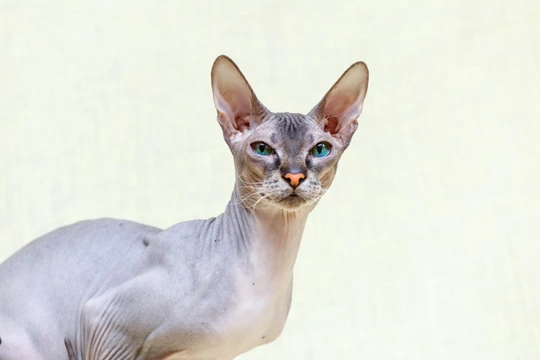
The Unusual Donskoy Cat
The Donskoy is another unusual hairless breed that's very similar to the Peterbald and the Sphynx Cat. However, there is a difference which is that the Donskoy are hairless which is due to a dominant gene rather than a recessive gene which causes Sphynx cats to be hairless. Although less popular and well-known as many other hairless breeds, but they are starting to find a large fan base in other countries of the world.
Origins of the Donskoy Cat
The Donskoy was first developed in Russia during the late eighties after a kitten was found in Rostov-on-Don, a Russian city by a lady called Elena Kovaleva. This kitten was to become the foundation cat for the breed. The kitten had been mistreated by some young boys and rescuing it, the lady took the kitten home with her only to find that a while later the little cat lost all her hair. A vet treated the kitten, but to no avail and two years further down the line, the now grown up bald cat called Varvara, had a litter of kittens herself all of which started to lose all their hair. Because people believed the kittens were unhealthy, they were not kept, but a cat enthusiast called Irina Nemikina rescued one of them and set about creating a new hairless breed of cat and she named them the Don Sphynx.
It was only later and when the breed was finally recognised by TICA that the breed became known as the Donskoy. Today, although quite rare, these lovely cats are finding their way into the hearts and homes of many people the world over including here in the UK.
Donskoy personality
Social, loving, inquisitive, elegant and quite unique, the Donskoy thrives on human contact and they adore being involved in everything that goes on in their environment. They are intelligent and learn things quickly which includes playing all sorts of interactive games, something they really enjoy doing. Being so social by nature, the Donskoy gets on with everyone and will quickly greet any new people that visit a home.
Extremely loyal and dedicated, they form strong bonds with their families and as such they really do not like spending any time on their own which in short means they are better suited to homes where there are other pets or where at least one person stays at home when everyone else is out. They also answer well to voice commands and will follow the people they love around the house to keep an eye on what they are doing which is another very endearing trait. They are quite vocal and will happily hold long conversations with their owners when spoken to or not.
Appearance of a Donskoy
These charming cats have four types of coat and they come in a variety of different colours with all except one resulting in a cat being hairless. As previously mentioned, this is because many Donskoys carry a dominant gene responsible for them not having coats. The four coat varieties are as follows:
- Rubber Bald
- Flocked
- Velour
- Brush
Rubber Bald Donskoys are born without any hair and remain hairless for the rest of their lives. The Flock Donskoy seems to be hairless but when touched, they feel like soft chamois leather, however, any hair soon vanishes and cats become totally hairless. Kittens with Velour coats will eventually see the hair becoming wiry and then it falls out in the first year leaving very little coat on their legs, tails and faces although in some cats become totally hairless too over time. Brush coated Donskoys only lose some of their hair over time retaining some on their bodies which can be bristly, wavy, soft or wiry.
One interesting thing about the Donskoy is that they can grow coats on certain parts of their bodies during the colder winter months which is more like fine wool which they then lose again when the weather warms up. Like people, they sweat through their skin too.
They are sturdy, elegant medium sized cats that boast having strong bones and lovely wrinkled skin that's quite velvety and warm to the touch. They have lots of wrinkles on their cheeks, under their chins and around their jowls with delightful vertical wrinkles between their ears which run down their foreheads before spreading horizontally above a cat's eyes which adds to their endearing and sweet looks.
They also have wrinkles around their base of their necks and breast areas as well at the base of their tails and on their legs. In fact, they have wrinkles on their bodies too. Males tend to be that much larger being wider at the shoulders and with broader heads than their female counterparts, but both have well-rounded abdomens and muscular, athletic bodies which are quite pear-shaped. Their front legs are shorter than their back ones and they have lovely oval shaped feet with long, slim toes which are reminiscent of a monkey's fingers. They have moderately long, straight tails that taper to a rounded tip.



